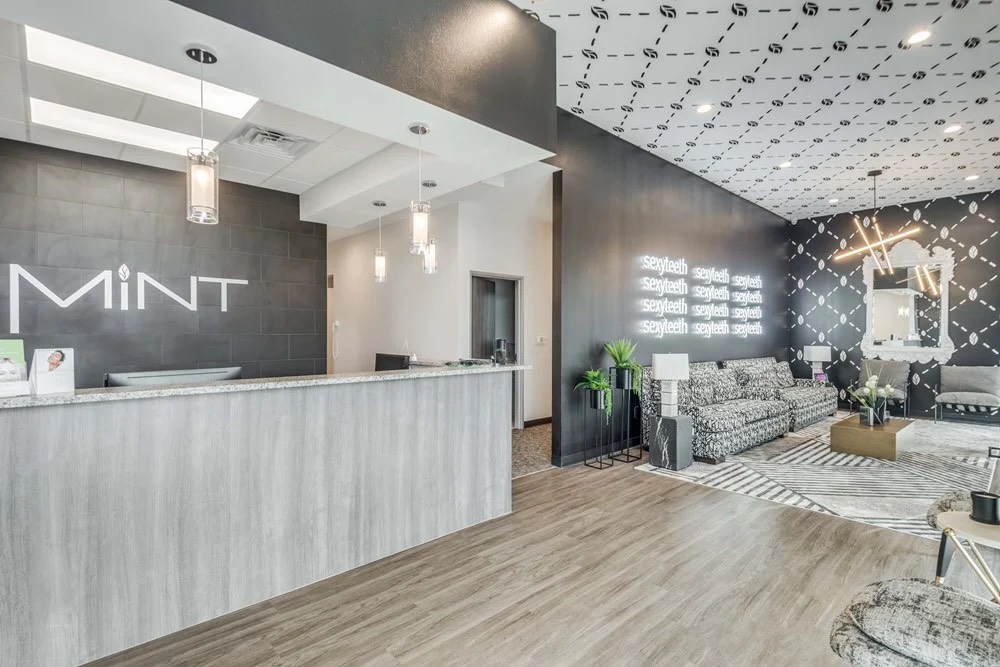
The Power of a Limited Treatment Strategy to Compete With DSOs and DTC Aligners
Published by Michelle Haupt on
By Tracy Martin
I have a problem. Over the last several years, as I’ve spoken at more and more orthodontic conferences and events, I’ve developed a condition my team has dubbed OPS: Over-Preparation Syndrome. Side effects include spending months obsessing about a topic, weeks of in-depth research, and a tendency to cram 2+ hours of content into a 45-minute talk.
Recently, I spoke about this topic at an event, but I’ve gotten so obsessed with it that I wanted to share it here. Now, my team worked fanatically to refine this down to its tightest form… but it’s not “short.” It is, however, information-rich, and I believe it will have a massive impact on your practice if you put these recommendations into action. So, pour yourself a fresh cup of coffee, or top off that wine glass, and let’s dig in.
Part I: Where We Find Ourselves
First off, let’s talk about the economy. It seems like everyone has been telling us 2023 is going to be tough, and we’ve all been noticing the signs for months. But while there were signs last year that our post-COVID honeymoon was over, lately we’ve started seeing more warnings that seem to echo from the past.
In our TC Facebook group (with around 1,100 TCs), there’s been lots of chatter about “more shoppers than ever,” “tough closures,” and “lots of no-shows.” And as we continue through this “not a recession” recession, we’ll only hear more things like, “Do I really NEED to do this NOW?”
There’s also inflation. If you’re like me, you’ll be horrified to learn that the average American is paying $600-$1,000+ more… per month… on the same items they bought a year ago. And it gets worse. Most will exhaust their savings by year’s end!
Gaidge’s 2022 Q4 stats just further prove that the writing is on the wall: NP calls are down, exams are down, starts are down, production is down, referrals are down… even starts from OBS are down!
The only thing up? No-shows. They’re up 10%! So, “recession” or not, it isn’t pretty. Which all means, it’s time for a new strategy!
May it please the court, I will now present The Case for Limited Treatment.
The DSO Experience

Ok, so we’ve talked a little about the economy. Now we need to talk a bit about our industry. What started with the rise in GP cases is now a market where DSOs & DTC aligner companies are THRIVING on the back of limited treatment (LTX). They aren’t thinking twice about serving the tens, if not hundreds, of thousands of people orthodontists politely declined to provide treatment for.
Let’s start with DSOs (Dental Support/Service Organizations) or what I used to call—with a disparaging tone—corporate dentistry.
As a TC I’d always say, “Oh, they’ll be back! Once they see that they’re just a number, with rotating doctors who only work once a month, and crummy service… it’ll be clear that we provide way higher levels of service!” Boy was I wrong.
I confess, as a consultant, I’ve been in hundreds of practices over the last seven or eight years—even developing the orthodontic departments in a handful of consolidation groups—and I can now confidently assure you that there are plenty of private practices that don’t hold a candle to the DSO experience.
They are now super intentional about courting the best-of-the-best graduates, from the best schools, using the best technology, the best apps, and hiring customer service experts from incredible companies outside of ortho. Not only that, but they measure their patient experience. Do you?
These modern DSOs regularly track their Net Promoter Score (NPS for short). And if one of the main metrics you track is “how likely people are to speak positively about you to others,” it will show!
They call patients “members” or “guests”. They have a TV on the wall (it’s a foot screen, because it’s by your toes) of their semi-private operatories (“suites”), and another on the ceiling. On the foot screen—just like when I check in at Marriott—there’s a welcome greeting letting me know my room is clean, and inviting me to get comfortable.
They text to see what show I’d like queued up on Netflix, and I’m given a set of Beats headphones to fully zone out. In Dallas, there’s one whose operatory chairs come with built-in massagers. And don’t get me started on their reception build-out!
This is NOT what I used to tell patients about when talk of a second opinion from a DSO came up.
So, they do all that: provide an memorable experience, obsess over customer service, and they’re racking up LTX cases like Patrick Mahomes racks up passing yards. Put simply: DSOs are meeting consumer needs.
Now, that’s one industry factor, but there’s a second.
Putting the Consumer in Direct-To-Consumer

As much as we may hate to admit it, DTC aligners are also meeting consumer needs. What do they know that we don’t?
Well, this is something we say so often it’s easy to overlook, but they’re called DTC, remember? It’s an abbreviation of their business model. They’re Direct-To-Consumer, not Direct-To-Patient.
Although we love to think of the people in our practices as patients—and in the strictest definition they are individuals receiving treatment from medical professionals—we must think of them as consumers. Orthodontists may be changing lives, but we’re not saving them. So, we have to compete based on experience. Consumers care about experience.
That experience, both in expediency (lack of office visits), and price, has resulted in DTC companies claiming a little more than 20% of the global clear aligner market. And one way they’re competing is limited treatment.
The reality is that most ortho practices DON’T offer LTX. That’s a fact. And of those that do, it usually makes up less than 4% of their patient base. How is it that something that has allowed DTCs, and to a lesser extent DSOs, to gain market share so aggressively is still just a rounding error for most practices?
Part II: How We Got Here
Well, this part might upset a few of you, but the simplest answer is ego. And as usual, your ego is not your amigo. One big reason we avoid LTX is our concern that they won’t tell everyone that they wanted it! We recommended full, but they insisted on limiting the project’s scope and ignoring that huge overjet, or janky lower crowding.
And even if they signed a special informed consent, we’re afraid they’re out walking around, making people think that’s the level of work we do at Straight Orthodontics!
The other big reason is the nightmare that stops us all: chasing Karen’s moving goal posts. You know, the one, where we started with LTX, but now her posterior tooth looks more crooked than her straight ones… and her teeth aren’t touching quite right. It gets to where you you’re just dying to debond and get her out of the practice, hating yourself for ever starting the case!
I get it; but hold on! Allow me to show you that there are strategies to make this less painful, and that this is actually the exact area where you should be growing your practice.
Part lll: Making the Shift
I talk all the time about how Millennials want what they want, and will make decisions pragmatically on how to get it. While they love saving on quality, getting what they want NOW doesn’t necessarily mean a forever level of quality for them. The immediate need is closing a gap or lining up their front teeth. Maybe we just want a better smile. And a Limited Treatment plan that does just that. Your admins & TCs should have strategies to help you quickly identify these people as early in the buying process as possible.
When you present LTX, I can’t stress enough how critical it is to be VERY clear on the treatment objectives. Keep it simple, so there’s no room for interpretation. Remember: conflict happens when expectations and reality don’t align. Don’t fluff the expectations; your pragmatic Millennial appreciates the transparency more than any previous generation you’ve worked with.
Here’s how I’d do it. Simple, clear, three levels, or three tiers if you prefer:

This graphic would be presented, and the patient would make their selection.
Now, I know we call it treatment – and this is where I’ll probably step on any remaining toes – but let’s be real, this is NOT the same as offering three different treatment options for a cancer diagnosis. It’s an elective, non-critical, largely cosmetic service they’re paying for. They can decide which option to choose. There’s no wrong answer here.
It also now resembles the traditional sales approach they’ve seen in every other buying process they’ve been a part of. It’s picking between the basic, premium, or ultimate car wash. Show me what I get with each level, along with my corresponding outcomes. It’s fair, authentic, and transparent.
I’d even go so far as to recommend putting your levels graphic on your website—like the “products” they are—along with their flat fees, and payment options. The DSOs are doing it.
Closing Thoughts
I started with talking about the economy. Look, it may get much worse before it gets better. But in economic hard times, if something is important, people downgrade; they don’t go without! They shorten vacations to a long 4- or 5-day weekend, versus the 7-day package. They drive instead of fly. They rent instead of buy. And they’ll choose limited treatment instead of full.
And I think you’ll be surprised what those LTX patients will turn into. Let them start where they feel comfortable, and then make it easy to roll up to a higher level… with a new contract of course.
As you consider limited treatment in your practice, I want to affirm what I know many of you have been thinking this entire time. Yes, there is still absolutely a professional responsibility of informing people. You should unquestionably provide your professional opinion and recommendation. And, if you don’t want to do what they’re asking, they can easily go elsewhere. No big deal. But remember, not everyone who joins a gym wants to be a fitness model. Meet your patients, your CONSUMERS, where they are.
I have one thought I want to leave you with. Are you tracking why your adults don’t start? I mean, really?
How many didn’t commit to treatment based on a $5K+ fee?
Or was it the time and energy commitment?
Was what we proposed not what they asked for?
How did we not meet their needs?
And most importantly…
What did they choose instead?
Tracy Martin is the founder and lead consultant of Straight Consulting. Growing up in ortho, having held every position over the course of 20+ years, in offices ranging from start-ups to multi-practice/multi-doctor and DSO, Tracy is passionate about the business of orthodontics. When she’s not speaking at regional and national conferences, or hosting Straight Consulting’s signature TC Mastery & Marketing Courses, Tracy can be found on the road, in offices throughout the U.S. and Canada. Tracy’s mission is to put a Millennial twist on traditional practice consulting and lead the development of next generation ortho teams. She can be reached via phone at 424-591-6723 or via email at tracy@straightconsulting.com.